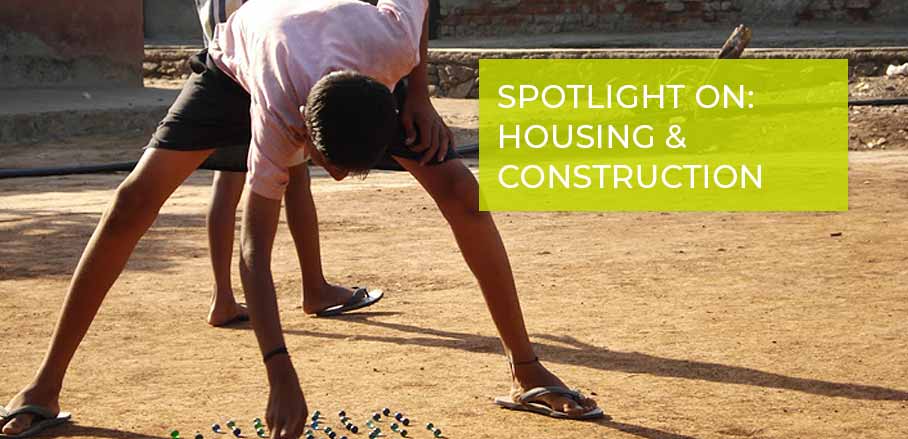Young People’s Participation: Critical for Responsive City Planning
In the Indian city of Mumbai, different groups participated in revising the city’s Development Plan. This article highlights the importance of the participation of young people in city planning at the neighbourhood level if planning is to respond adequately and responsibly to contemporary challenges.
Young People in Informal Settlements
By 2020, India is set to become the world’s youngest country with 64 per cent of its population in the age group of 15-35 [1]IRIS Knowledge Foundation, UN Habitat Global Urban Youth Research Network (2013) State of the Urban Youth, India 2012: Employment, Livelihoods, Skills.. Within the age group of 16-32, 35 per cent live in urban India [2]National Sample Survey Organisation Survey (66th round) 2009-10.. Urban plans in India are commonly drawn up for the next two decades. This is a significant period of young people’s life in the city, and these plans will have a lasting impact on their everyday experiences of the urban. Young people [3]The definition of youth varies across agencies. The UN considers the 15-24 age group. The Indian Census considers the age group of 10-24 as ‘young people’. The National Youth Policy of the Government of India 2012 considers 16-30. therefore constitute a critical population group that must be involved in the process of urban planning.
As per the 2011 census, 22.4 per cent of India’s urban population lives in inadequate housing ubiquitously referred to as slums. The informal use of land for housing, work, social amenities, recreation and open spaces is a common feature of these settlements and interconnected neighbourhoods. So far, successive urban plans have not taken into account their existence, let alone their needs. Slums are seen as ‘encroachments’ on land, ‘manipulations’ of land use plans and ‘informalising’ the formal land economy and property tax systems irrespective of their legality and tenure.
Contemporary planning discourse is increasingly focused on having to understand and address issues surrounding this ‘informality’ in land use. Practice shows that planning at the micro level or at the level of the neighbourhood through Local Area Plans with people’s participation is an effective way of incorporating land use that people have created as a result of their needs.
Young People Hold Local Governments Accountable
Education on urban planning and its many aspects is the first step to foster informed youth participation in the planning process. Through critical education, young people learn to contextualise their issues and think spatially so that they are able to inform the planning process.
During the revision process of the Mumbai Development Plan in 2016, young people from various slum settlements were able to creatively articulate their demands through a city-level campaign to the local government. They not only demanded land reservation for amenities like open spaces, study centres, community centres that were closest to their immediate needs, but were also able to raise awareness for planning issues among the larger community. They organised campaigns of public education on the Development Plan, initiated dialogue within the community, and articulated the results of this dialogue to the local government.
With the seeds sown while learning about spatial distribution in their neighbourhoods, the youth were able to think at a macro level. With the support of YUVA in 2017 they began a campaign to claim spaces, both open spaces and commons, for recreation and other needs. They have since claimed spaces in and around their neighbourhoods, along roads and flyovers. These were spaces that were either misused or unutilised. Moreover, their active engagement in governance through the planning process gave them an impetus to advocate for changes in the way land is used and negotiate the same within their neighbourhoods.
Youth Participation for Successful Local Area Planning
Urban planning must increasingly involve itself in the social and political realities of different actors if it aims to evolve and meet its social obligations. These actors, young people being one of them, are obviously not a homogenous group – differences in age, caste, gender, class, social location, urban or peri-urban location affect their understanding and experience of a city. Though it is a challenge to incorporate the needs of a variety of actors, through planning at the local level and enabling participation, urban planners will be able to address these differences more successfully. Young people from selected settlements have proved that this is possible in Mumbai.
While Mumbai remains a stand-alone case of youth participation and further research is required to understand the effects of their involvement, citizens’ participation in planning must be acknowledged as a right. Participation makes the biggest difference for marginalised communities, who are usually far removed from mainstream processes of decision making for the cities they live in. Local governments need to institutionalise meaningful participation of various actors and traditionally marginalised groups, especially young people, if planning is to remain relevant and responsive to those who supposedly create ‘informalities’ within cities.
- Young People’s Participation: Critical for Responsive City Planning - 6. September 2018
